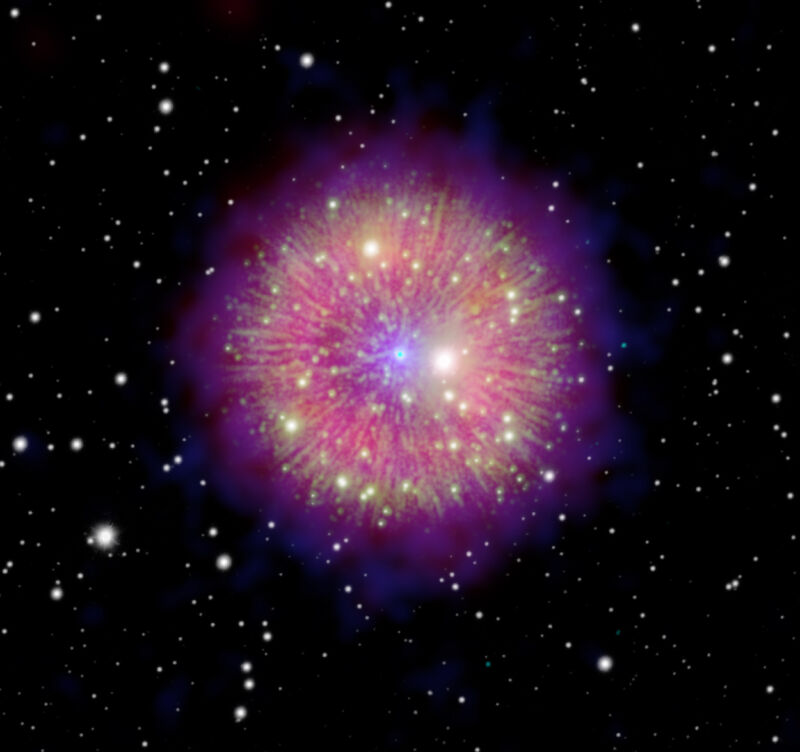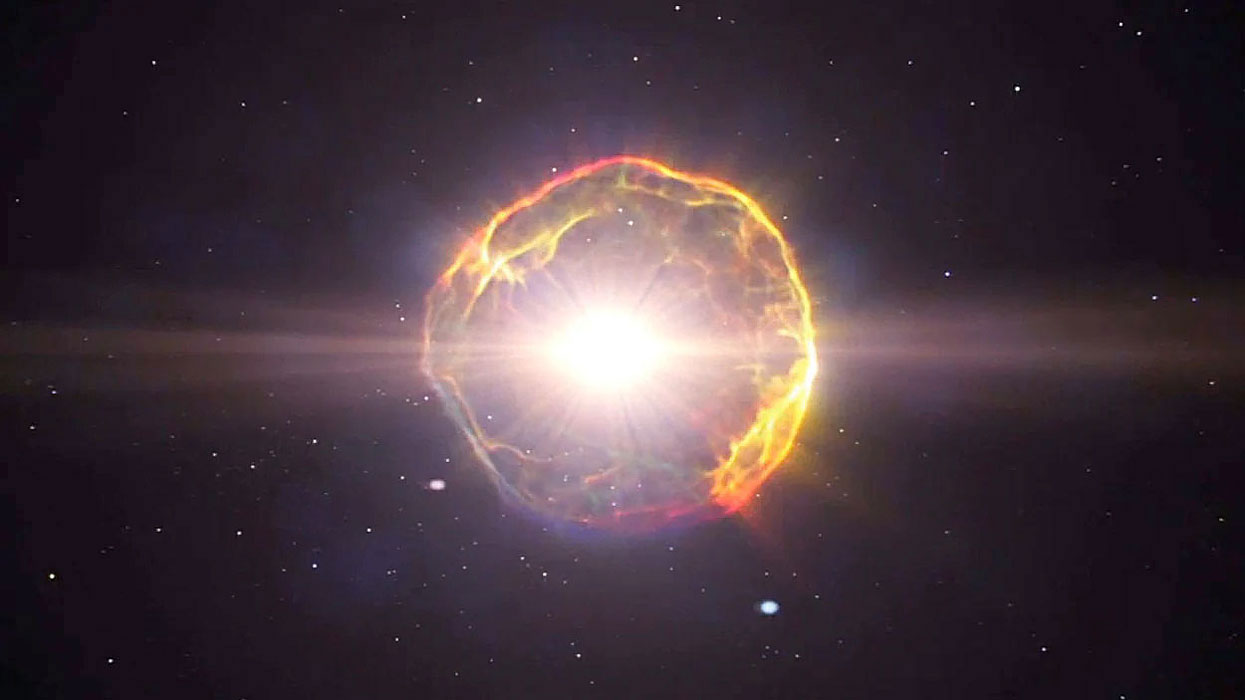
Good morning. It's March 28, and today's photo comes from NASA's Chandra X-ray Observatory as well as a host of other observatories.
It is a composite image of supernova remnant SNR 1181. The name of the object gives us a clue to when this object went supernova: the year 1181. For about half a year, the 'new' star appeared in the constellation Cassiopeia. It took a long time before astronomers using modern telescopes were able to find the remnant of this supernova, but they finally did so in the last decade.
This image combines X-ray, optical, and infrared wavelengths to bring the remnant to life. And in doing so, astronomers have been able to piece together what happened to cause the supernova. It seems to have been quite an incredible bit of astronomical sleuthing:
Studies of the composition of the different parts of the remnant have led scientists to believe that it was formed in a thermonuclear explosion, and more precisely a special kind of supernova called a sub-luminous Type Iax event. During this event two white dwarf stars merged, and typically no remnant is expected for this kind of explosion. But incomplete explosions can leave a kind of ‘zombie’ star, such as the massive white dwarf star in this system. This very hot star, one of the hottest stars in the Milky Way (about 200,000 degrees Celsius), has a fast stellar wind with speeds up to 16,000 km/h. The combination of the star and the nebula makes it a unique opportunity for studying such rare explosions.
The Chandra Observatory, by the way, faces steep budget cuts despite the fact that it remains operational. There is an effort to save the Great Observatory.
Source: Chandra X-Ray Observatory



3175x175(CURRENT).thumb.jpg.b05acc060982b36f5891ba728e6d953c.jpg)
Recommended Comments
There are no comments to display.
Join the conversation
You can post now and register later. If you have an account, sign in now to post with your account.
Note: Your post will require moderator approval before it will be visible.